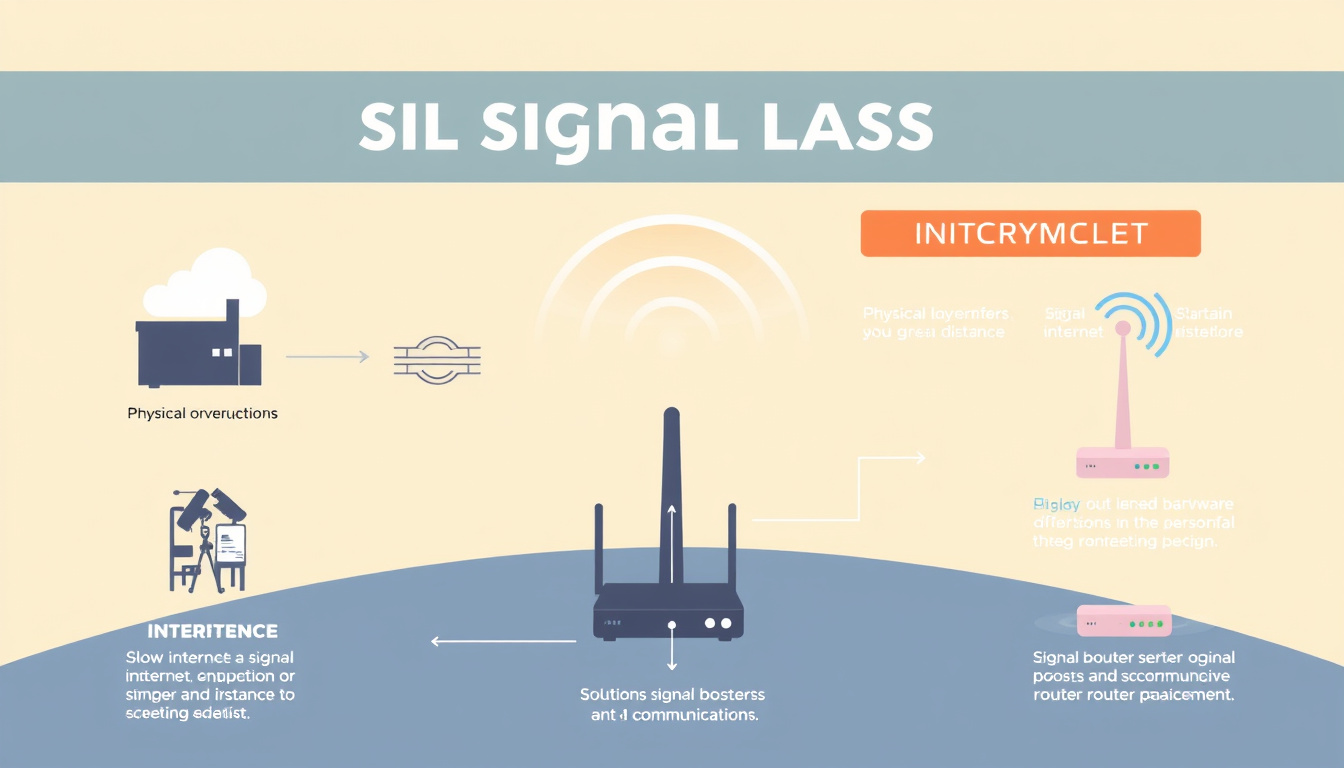In an era where communication and connectivity form the backbone of our daily lives, the issue of signal loss can create significant inconveniences. Whether it’s experiencing dropped calls, slow internet connections, or potentially hazardous gaps in critical data communications, understanding the reasons behind signal loss is crucial. This article will explore the various causes of signal loss, its effects on users, and practical solutions to enhance connectivity.
What Is Signal Loss?
Signal loss refers to a decline in the strength and quality of a communication signal, which can occur in various contexts, from cellular networks to smart devices and beyond. The implications of signal loss can vary depending on the application; for example, in mobile communications, it can result in dropped calls and slow data transmission, while in medical devices, it might lead to missed alerts or the inability to monitor vital health information.

Common Causes of Signal Loss
-
Physical Obstructions: One of the most prevalent causes of signal loss is physical barriers. Materials such as concrete, metal, and low-E glass can significantly weaken signals when transmitting through walls, roofs, or other structures. This is particularly problematic for indoor environments where cellular signals need to penetrate multiple barriers.
-
Distance from Transmitter: The strength of a signal diminishes with distance. The farther a mobile device is from a cell tower or smart device transmitter—for instance, a continuous glucose monitor (CGM)—the weaker the signal. In rural areas or densely built urban centers, this can lead to significant connectivity issues.
-
Network Congestion: In urban environments, high demand on cellular networks can lead to congestion, causing dropped calls and reduced data speeds. During peak usage times, when many users are online simultaneously, the network may struggle to provide adequate service.
-
Geographic Features: Natural landscapes, including mountains, valleys, and even dense vegetation, can obstruct signals and create coverage gaps. This is especially evident in areas where cell towers are sparse or unevenly distributed.
-
Environmental Conditions: Weather-related phenomena, such as heavy rain, snow, or solar flares, can temporarily affect signal strength, with electromagnetic interference being a common culprit.
-
Device Limitations: Older mobile devices may not support the latest technologies or network frequencies essential for optimal performance, leading to weaker connections. Device settings (such as low power mode) can also interfere with connectivity.
Effects of Signal Loss
The ramifications of signal loss extend beyond inconvenience. For personal and business communication, dropped calls can hinder important conversations and lead to frustration. For businesses relying on e-commerce, signal loss can affect online transactions and customer service capabilities.
Moreover, medical devices, like CGMs, rely on consistent connectivity to relay critical health data. A lapse in signal can impede timely interventions, leading to potentially serious health consequences.
Solutions to Combat Signal Loss
Understanding the underlying causes enables users and service providers to implement effective strategies to combat signal loss:
-
Signal Boosters: Investing in signal boosters can significantly enhance cellular reception, particularly in areas known for weak signals. These devices can capture, amplify, and redistribute outside cellular signals, enhancing indoor connectivity.
-
Wi-Fi Calling: Enabling Wi-Fi calling on devices allows users to leverage their home or office internet connection for calls and texts, providing a reliable alternative when cellular signals are poor.
-
Proper Device Configuration: Keeping devices updated and optimizing settings (like enabling background app refresh for essential apps) helps ensure devices maintain connectivity effectively.
-
Choosing the Right Carrier: Not all carriers provide the same level of coverage. Users should research and select providers based on their area’s specific needs and coverage maps to ensure reliable service.
-
Reducing Interference: Moving closer to transmitters and keeping devices free from physical obstructions (such as putting devices in pockets or bags) can help maintain a strong signal.
-
Infrastructure Development: For areas experiencing consistent connectivity issues, advocating for more cell towers or alternative solutions like satellite broadband can help expand coverage.
Conclusion
Signal loss can be a frustrating barrier to seamless communication and connectivity, but understanding its causes allows users to take proactive measures to mitigate the issues. By leveraging technology, optimizing our environments for better signal reception, and choosing the right service providers, we can enhance our connectivity experiences and minimize the impact of signal loss in our increasingly digital lives.



